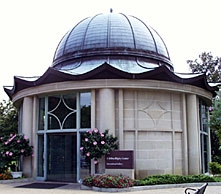Presenter: Gary McGowan*, Principle Objects Conservator, Cultural Preservation & Restoration
Title: Preserving Maritime History
Date: January 8, 2015; Three Ring Meeting, Nautical Related
Summarizer: Ed McManus

The precepts of conservation include the preservation of cultural property including materials that hold scientific, historical, religious or social significance, irreplaceable legacy to be preserved for the future and opportunities for further study and enjoyment of our past. Unfortunately, important archaeological sites, both terrestrial and marine are discovered by accident or have been previously exploited by individuals without archaeological or conservation training. The challenges to the precepts of conservation include treatment options, timely treatment windows, funding, interpretation and study, and long-term curation and stewardship. McGowan uses the discovery and treatment of three historic vessels to demonstrate what conservators must often address after the fact. The vessels are the HMS Debraak, the World Trade Center Ship and the Ronson Ship.
The Dutch cutter DeBraak, (Dutch for Beagle) sailed against England under the Dutch Flag and was subsequently seized by the English. It was renamed the HMS Sloop of War, Braak in 1794. In 1800 the vessel capsized in Delaware Bay with a loss of 35 crewmen. It was salvaged in 1984 by “Sub Sal,” a salvage company. Eventually the state of Delaware took an interest in the vessel and 27,000 artifacts as well as the hull were recovered and turned over to the Delaware State Museum. Only a few artifacts were treated initially, the majority remained in tanks of water for 20 years. Eventually most of the artifacts received treatment but the hull which has been subjected to a water spray for almost 30 years has not. Challenges to treatment include funding, treatment logistics and the lack of an exhibit or interpretive plan.
The World Trade Center Ship was scuttled in the early 19th-Century as part of the landfill to expand lower Manhattan. The vessel was discovered during excavations for the World Trade Center Memorial in 2010. The Client for the project was the Port Authority of New York and New Jersey. Many of the small artifacts that were recovered received conservation treatment and to the best of the author’s knowledge, the hull is being conserved at the conservation labs of Texas A & M University which is recognized as one of the few facilities capable of providing conservation treatment to large marine artifacts. Small artifacts will be accessioned by the New York State Museum but disposition of the Hull remains a concern. Although it was found at the World Trade Center site it not within the mission of the World Trade Center Museum.
The Ronson Ship was discovered 1982 during excavations near Water Street in lower Manhattan. The developer for the site was Howard Ronson, thus the name Ronson Ship. The archaeologist for the excavation was Joan Geismar from NYC. The vessel was a 200 ton, three-masted ocean trader. After excavation small artifacts received treatment from a number of conservators. Both the Hull and the artifact collection now reside at the Mariners Museum in Newport News, Virginia. Further conservation treatment is required but will not proceed due to budgetary constraints.
The three vessels are indicative of the challenges to our precepts of conservation treatment. Gary McGowan asks: how can the conservation profession be more proactive to address those challenges.
* Mr. McGowan was unable to attend the WCG 3-Ring Circus but has provided the Guild with his Power Point Presentation: Find the presentation here